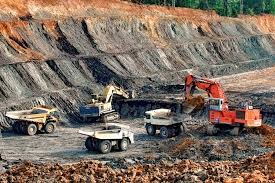The global top 40 mining companies are so far weathering the COVID-19 crisis but should take advantage of relative stability to adopt strategies to mitigate against further economic and social risks, according to PwC’s Mine 2020 report.
PwC’s forecast for 2020 suggests the big miners will take a modest hit to earnings before interest, tax, depreciation, amortisation and impairment (EBITDA) of approximately 6percent. This follows a strong financial performance in 2019 – with revenue up 4percent to US$692billion and market capitalisation up 19percent to US$898billion (though since reduced to US$752billion on 30 April 2020). On this basis PwC believes the Top 40 are in a strong and resilient position to weather the economic uncertainty created by COVID-19.
Despite this positive outlook, the report cautions that mining companies will need to adapt to long-term impacts caused by COVID-19. Miners may need to think about de-risking critical supply chains and investing more in local communities. A shift towards localisation in supply chains and for smaller deals in local markets, as well as different forms of community engagement, may turn out to be enduring consequences of the pandemic.
With the global economy in uncertain times following the COVID-19 outbreak, with the International Monetary Fund predicting a 3percent contraction in the global economy for this year, PwC on June 11 said the top 40 miners “are in an excellent position on to weather the storm”.
This is based on the back of a solid financial performance in 2019 and prudent capital expenditure (capex), with the world’s Top 40 miners facing the crisis with strong balance sheets and “the flexibility to respond”.
PwC estimates that the volatility in commodity prices and production as a result of the outbreak will only moderately impact the Top 40’s profitability this year. The market appears to agree, the consultancy added, noting that the top 40’s share prices are recovering faster than some of the major indices in the last five months.
Coal’s contribution to revenue remained steady over the year, while iron-ore grew on the back of a five-year peak of nearly US$130/t. The iron-ore price, which was driven up by production shortages following tailings dam breaches in Brazil, subsequently eased owing to cooling demand and the US-China trade war.
The price of base metals and coal has dropped since the onset of COVID-19 owing to the decline in customer demand, disrupted global supply chains and market volatility. According to PwC, mining companies are responding by “repositioning their business strategy and production estimates for 2020”. Revenue gains, however, did not translate into profit before tax, which declined in aggregate by 11percent over the year, according to the report.
On this basis, PwC Africa energy utilities and resources leaderAndries Rossouw believes the Top 40 are in a strong and resilient position to weather the economic uncertainty created by Covid-19.
During 2019, the Top 40 miners continued to reward shareholders, with dividend payouts at a five-year high. Cash dividends to shareholders were $55-billion across the Top 40 miners, up by 25% from 2018. The average 2019 dividend payout ratio was 78%, and the average dividend yield was 4.3percent.
This is considered a “remarkable feat”, according to the consultancy, which notes in its Mine 2020 report that global growth is expected to decline this year – something that has only happened twice in modern times: in 1944, during World War 2; and in 2009, during the global financial crisis.
It is for this reason that PwC believes the Top 40 miners’ ability to “resource the future” continues to be relevant in the current environment as many governments will likely appreciate mining for being “a bedrock of economic recovery” moving out of the Covid-19 crisis.
Additionally, with many companies having needed to adapt and evolve, Rossouw noted that “some changes have been for the better”, such as remote workforce planning and a greater use of automation.
According to Rossouw, although mining has been able to keep operating to some extent throughout the Covid-19 pandemic, companies all over the world, including those in South Africa, have had to adapt and evolve.
“The Top 40 have shown that they can innovate, adapt and respond to this crisis along with the best. Some of these changes include remote workforce planning and a greater use of automation. It is expected that many of these adaptations will become permanent in the long term,” he elaborated.
He added that the pandemic had also highlighted the sector’s resilience and the role that miners can play in supporting communities and the broader economy, and that “although the crisis is far from over, miners are already applying the valuable lessons they have learnt”.
Meanwhile, the report noted a changing outlook for investment and deals, with capex up 11percent to US$61-billion in the 2019 financial year. PwC expects capex for this year to slow, freeing up cash flows and giving miners the capacity to pay dividends should they choose to do so.
Further, on the mergers and acquisitions front, the consultancy does not expect many megadeals to take place this year owing to increased economic uncertainty and practical constraints of site visits and inspections, although current conditions provide opportunities for the Top 40 to capitalise on smaller acquisitions in their local markets.
The enterprise value of mega gold deals totalled US$19.2-billion in the 2019 financial year, and gold deals are “not likely” to recur to the same size or quantum as in recent years.
Further, one of the key takeaways from the report is that cybersecurity requires attention and needs to be seen as another critical aspect of health and safety, Rossouw said during the report’s virtual launch.
The report shows that 12percent of mining and metals companies’ CEOs are “extremely concerned” about cybersecurity, down from 21percent in 2018 and 14percent in 2019. However, the report notes that over a similar period the number of reported cyber breaches among mining companies increased fourfold. “As mining companies place more reliance on digital technology, so too does the cybersecurity risk increase. Cybersecurity should be an integral part of the Top 40’s safety and business strategies,” Rossouw stressed.
Meanwhile, expectations around environmental, social and governance (ESG) continue to grow. The Mine 2020 report found that most large miners are moving in the right direction on ESG disclosures, but some are performing better than others.
Only 11 of the Top 40 companies, 28 percent are setting public ESG commitments and targets, reporting consistently against them, and linking executive and management performance to achieving them.
While no one commodity group is outperforming any other, given rising stakeholder expectations, all Top 40 miners “should have moved past the stage of general or variable commitments about ESG”.
“To raise mining’s ESG credentials, miners need to lift their game both individually and collectively. Mining responsibly, considering all aspects of the mining life cycle, is more important now than it has ever been,” Rossouw commented, noting that this also includes being open and transparent about it.
He added that reporting on the areas that really matter to stakeholders, whether they are investors, customers, employees, governments or the community at large, is “critical in telling mining’s ESG story










